Welcome to our comprehensive guide on aquascaping with mosaic plants, with a particular focus on Ludwigia Sedioides.
Whether you’re new to aquascaping or a seasoned aquarist, this article will provide valuable insights into designing beautiful and thriving aquatic environments in your aquarium.
Ludwigia Sedioides, also known as the mosaic plant, is a stunning aquatic plant native to Central and South America.
Its vibrant green leaves and striking red-to-orange flowers, resembling mosaic patterns, make it a captivating addition to any aquascape.
This guide will help you understand the characteristics of Ludwigia Sedioides and provide you with design ideas and maintenance tips to ensure its health and longevity in your aquarium.
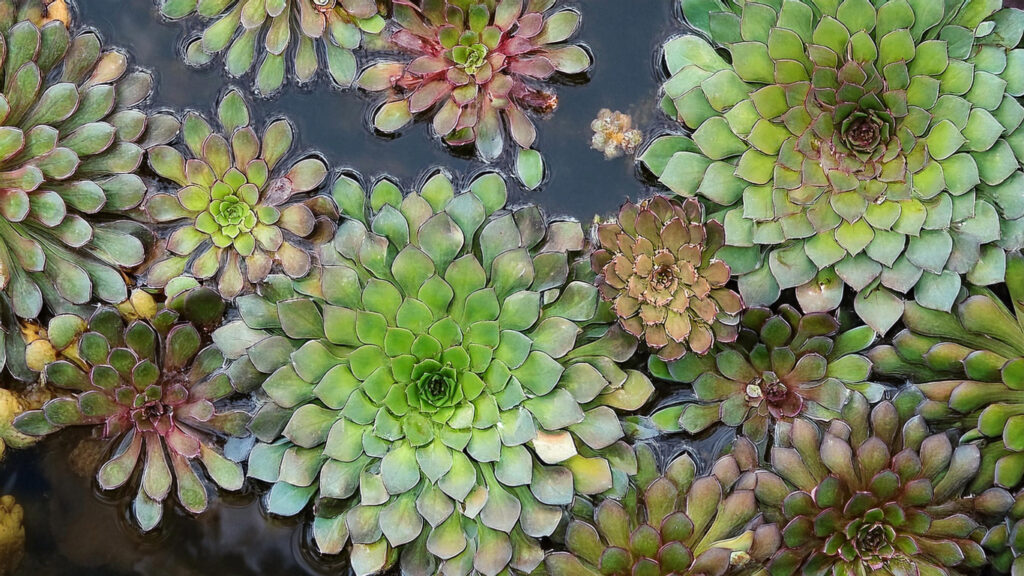
Key Takeaway
- Aquascaping with mosaic plants, particularly Ludwigia Sedioides, can add a unique and attractive aesthetic to your aquarium.
- Understanding the growth patterns, water requirements, lighting, and nutrient needs of Ludwigia Sedioides is essential for successful cultivation.
- Strategically positioning Ludwigia Sedioides and pairing it with other aquatic plants can create visually pleasing focal points in your aquascape.
- Proper planting and propagation techniques are crucial for the successful establishment and growth of Ludwigia Sedioides.
- Regular maintenance, including water testing, cleaning techniques, and balancing the ecosystem, is essential for preserving the beauty of mosaic plants.
Quick Stats
| Attribute | Details |
| Family Name | Onagraceae |
| Origin | South America, specifically Brazil and Venezuela |
| Height | Leaves float on the water surface; stems can grow several inches below water |
| pH Range | 6.5 – 7.5 |
| CO2 Requirement | Not applicable for pond plants |
| Growth Rate | Moderate |
| Care Level | Moderate |
| Color Form | Green leaves with red undersides, forming rosettes |
| Water Conditions | 24-28°C (75-82°F), prefers clean, still to slow-moving water |
| Max Size | Rosettes can spread up to 30 cm (12 inches) in diameter |
| Lighting | High |
| Supplements | Not typically required; nutrient-rich water benefits growth |
| Placement | Floating or planted in shallow water |
| Propagation | By seed or dividing the rosettes |
What Is Ludwigia Sedioides?
This plant, also known as the mosaic plant, is a stunning aquatic plant native to Central and South America.
It is characterized by its vibrant green leaves and striking red-to-orange flowers that resemble mosaic patterns.
The plant thrives in freshwater aquariums and adds a unique and attractive aesthetic to any aquascape.
Understanding the characteristics and requirements of Ludwigia Sedioides is essential for successful cultivation and maintenance.
Natural Habitat And Origin
Ludwigia sedioides, also known as Mosaic plant, is native to Central and South America, particularly Brazil and Venezuela.
It naturally grows in shallow, slow-moving waters, such as marshes, ponds, and streams, where it thrives in warm, tropical climates.
The plant is often found floating or partially submerged, with its distinctive mosaic-like leaves floating on the water’s surface.
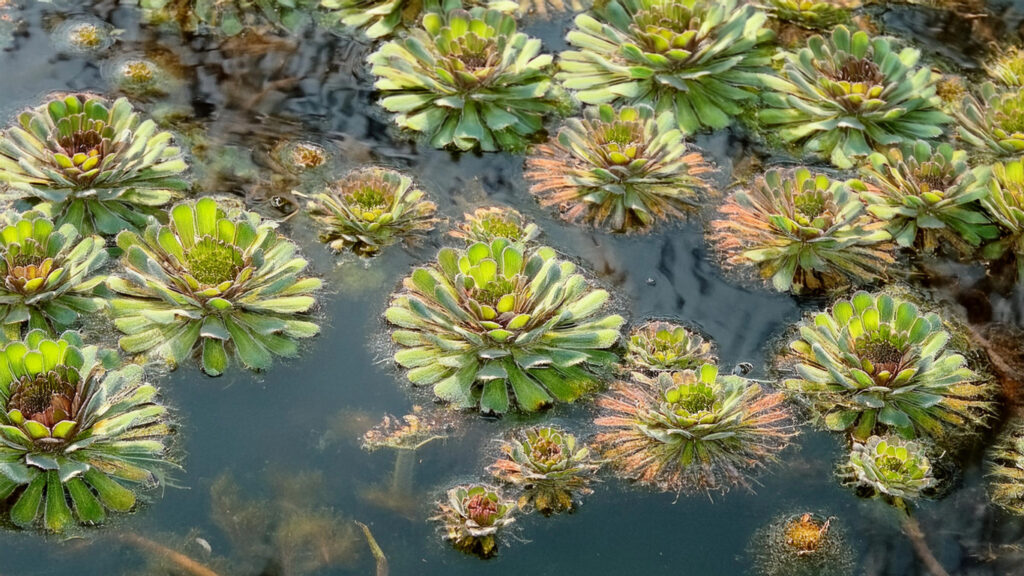
Physical Characteristics
- Mosaic-Like Leaves: The most striking feature of Ludwigia sedioides is its mosaic-like leaves, which resemble intricate patterns or puzzle pieces. These leaves are typically round to oval in shape and have serrated edges, creating a visually appealing mosaic effect.
- Reddish-Green Coloration: The leaves of Ludwigia sedioides exhibit a vibrant reddish-green coloration, with shades ranging from deep red to bright green. This coloration adds to the plant’s ornamental appeal and makes it a popular choice for aquascaping.
- Floating Growth Habit: Ludwigia sedioides is a floating plant, meaning it grows partially submerged with its leaves floating on the water’s surface. This growth habit allows the plant to receive ample light for photosynthesis while also providing shade and shelter for aquatic life below.
- Stem Structure: Beneath the water’s surface, Ludwigia sedioides develops long, slender stems that anchor the plant in the substrate or attach to nearby objects. These stems may grow vertically or sprawl horizontally, depending on the environmental conditions and available space.
- Root System: While Ludwigia sedioides primarily grows as a floating plant, it may also develop a root system that extends into the substrate or attaches to underwater surfaces. These roots help anchor the plant and absorb nutrients from the water column.
RELATED: Creating A Stunning Red Accent With Ammania Senegalensis At Home
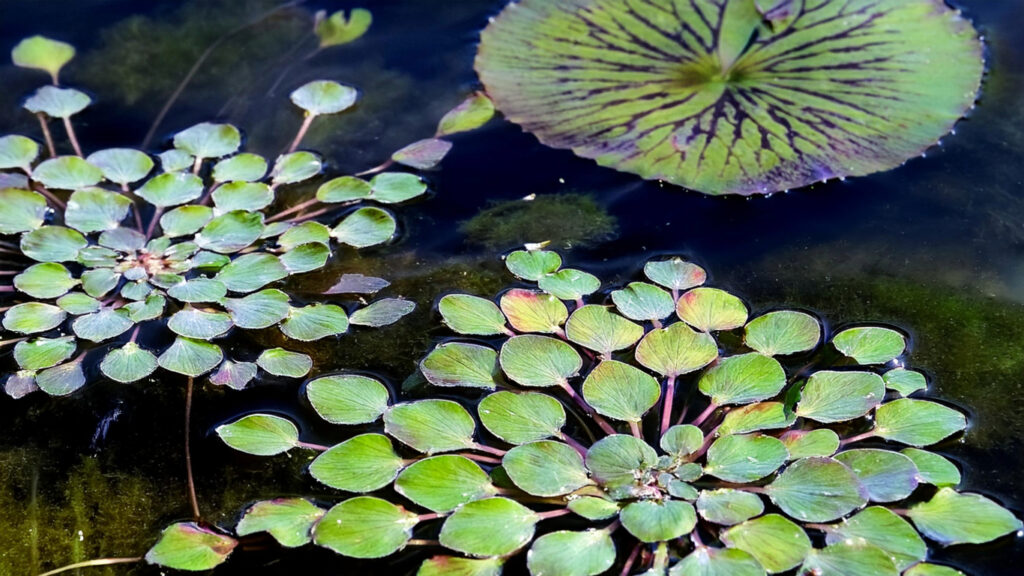
Lighting Needs
- Intensity: Aim for moderate to high-intensity lighting, typically ranging from 2 to 3 watts per gallon (WPG) or around 30 to 50 lumens per liter (lm/L). LED or fluorescent lights with adjustable brightness settings are ideal for achieving the desired light intensity.
- Duration: Provide a photoperiod of 8 to 10 hours of light per day to simulate natural daylight cycles. Use a timer to ensure consistent lighting schedules and prevent excessive light exposure, which can lead to algae overgrowth.
- Color Spectrum: Ludwigia sedioides benefits from a full spectrum of light, including blue, red, and green wavelengths. LED lights with a color temperature between 5000K and 7000K are suitable for promoting optimal photosynthesis and enhancing the plant’s coloration.
- Avoid Shading: Ensure that Ludwigia sedioides receives direct light without being shaded by other plants or decorations in the aquarium. Position the light source above the water’s surface to maximize light penetration and coverage.
Optimal Water Condition
- Temperature: Ludwigia sedioides thrives in tropical temperatures typically ranging from 22°C to 28°C (72°F to 82°F). Ensure water temperature remains stable within this range to prevent stress and promote healthy growth.
- pH Level: Aim for a slightly acidic to neutral pH level between 6.5 and 7.5. This pH range is suitable for most aquatic plants, including Ludwigia sedioides, and supports nutrient availability and biological processes.
- Water Hardness: Ludwigia sedioides can tolerate a wide range of water hardness levels, but it generally prefers moderately soft to moderately hard water with a carbonate hardness (KH) between 3 and 8 dKH and a general hardness (GH) between 3 and 12 dGH.
- Nutrient Availability: Ludwigia sedioides requires access to essential nutrients, including nitrogen, phosphorus, potassium, and micronutrients like iron and trace elements. Regularly dose a comprehensive liquid fertilizer or use root tabs to provide these nutrients, especially in planted aquarium setups.
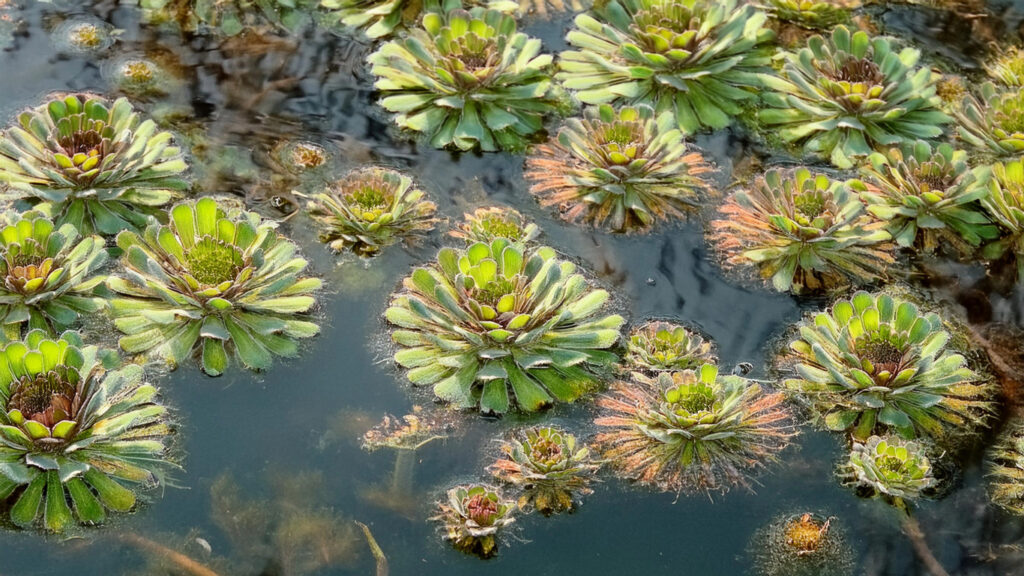
Suitable Temperature For Growth
- This plant, commonly known as Mosaic plant, thrives in tropical temperatures typical of its native habitat in Central and South America. The suitable temperature range for its growth is approximately 22°C to 28°C (72°F to 82°F).
- Maintaining water temperatures within this range is crucial for promoting healthy growth and vibrant coloration in Ludwigia sedioides. Fluctuations outside of this range can stress the plant and inhibit its growth, so it’s essential to monitor and regulate water temperature consistently in the aquarium.
RELATED: The Elegant Aquatic Design With Anubias Hastifolia
Substrate Requirement
- Nutrient-Rich Substrate: It can absorb nutrients through its roots if planted in a nutrient-rich substrate. Choose a substrate specifically designed for planted aquariums, such as nutrient-rich soil or clay-based substrates, to provide essential nutrients for healthy growth.
- Fine Gravel or Sand: If planting Ludwigia sedioides in the substrate, use a fine-grained gravel or sand substrate that allows the roots to anchor securely while still allowing water circulation and nutrient uptake. Avoid substrates with large particle sizes that may impede root growth or become compacted.
- Depth: Plant Ludwigia sedioides in a substrate layer with a depth of at least 2 to 3 inches (5 to 7.5 centimeters) to ensure proper root development and stability. Deeper substrate layers provide more space for root expansion and nutrient absorption.
- Substrate Additives: Consider incorporating substrate additives such as root tabs or nutrient pellets to enhance nutrient availability for Ludwigia sedioides and other rooted plants in the aquarium. These additives release essential nutrients gradually, providing long-term nourishment for healthy plant growth.
Placement Option
- Floating: Allow Ludwigia sedioides to float on the water’s surface, where its distinctive mosaic-like leaves can create a striking visual display. This placement option allows the plant to receive ample light for photosynthesis and provides shade and shelter for fish and other aquatic inhabitants.
- Surface Cover: Use Ludwigia sedioides as a surface cover to create natural-looking mats or patches on the water’s surface. This placement option not only adds visual interest but also helps reduce evaporation and nutrient loss from the aquarium water.
- Background Planting: If planted in the substrate, Ludwigia sedioides can be placed in the background or along the sides of the aquarium to create a lush green backdrop. This placement option adds depth and dimension to the aquascape while providing a natural habitat for fish and invertebrates.
- Hanging: In paludarium or riparium setups, Ludwigia sedioides can be allowed to hang over the edges of the aquarium or planted in emergent areas where its trailing stems can drape gracefully into the water. This placement option adds a touch of greenery to the aquascape while enhancing the naturalistic aesthetic.
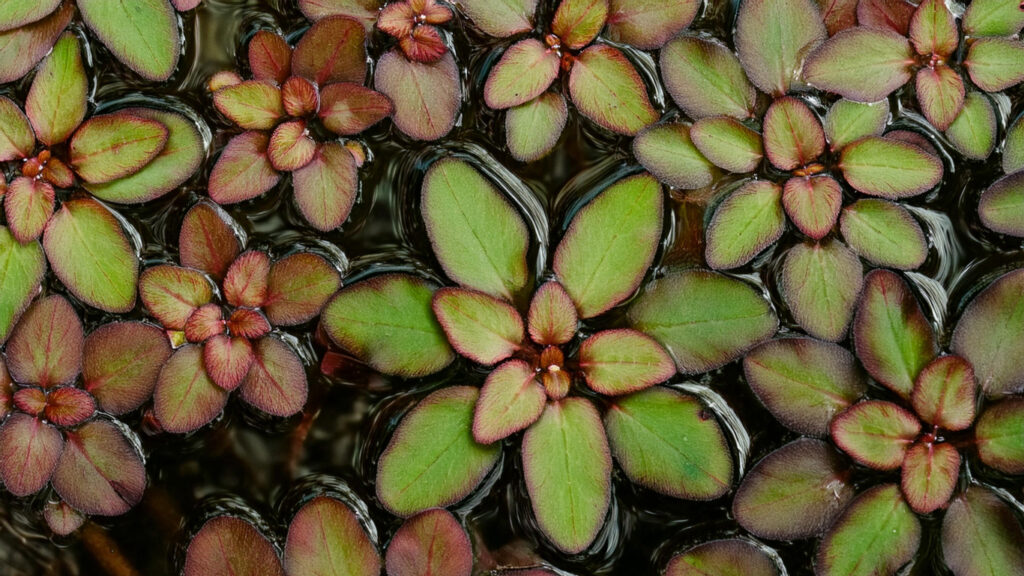
Recommended Tank size
- The recommended tank size for Ludwigia sedioides, or Mosaic plant, depends on various factors such as the aquascape’s design, the size of the aquarium inhabitants, and the desired aesthetic. However, as a floating plant with a relatively small footprint, Ludwigia sedioides can thrive in a wide range of tank sizes.
- For smaller aquariums, such as nano tanks or desktop setups, a tank size of around 5 to 10 gallons can accommodate Ludwigia sedioides effectively. In larger aquariums, such as 20-gallon tanks or more, Ludwigia sedioides can be used as a versatile floating plant to add visual interest and provide shade and shelter for fish and other aquatic inhabitants.
- Ultimately, the tank size should provide ample space for Ludwigia sedioides to float and spread out while also allowing for proper water circulation and maintenance. Consider the overall dimensions and layout of the aquarium when determining the appropriate tank size for incorporating Ludwigia sedioides into your aquascape.
Suitable Tank Mates
- Small Fish: Peaceful, small-sized fish species like neon tetras, guppies, danios, and rasboras can cohabit with Ludwigia sedioides without causing harm to the plant or each other.
- Shrimp: Dwarf shrimp species such as cherry shrimp, amano shrimp, and ghost shrimp make excellent tank mates for Ludwigia sedioides. They help keep the aquarium clean by scavenging for algae and detritus while posing no threat to the plant.
- Snails: Freshwater snails like nerite snails, mystery snails, and ramshorn snails are beneficial tank mates that assist in algae control and substrate maintenance without causing damage to Ludwigia sedioides.
- Bottom Dwellers: Peaceful bottom-dwelling species such as Corydoras catfish and Otocinclus catfish can coexist with Ludwigia sedioides, complementing the plant’s floating growth habit with their activity near the substrate.

Nutritional Needs Of The Plant
- Macronutrients: This plant requires essential macronutrients such as nitrogen (N), phosphorus (P), and potassium (K) for healthy growth. These nutrientsplay vital roles in photosynthesis, cell structure, and overall plant metabolism.
- Micronutrients: In addition to macronutrients, this plant also requires various micronutrients, including iron (Fe), manganese (Mn), zinc (Zn), and others. These micronutrients are essential for enzyme function, chlorophyll synthesis, and other biochemical processes within the plant.
- Carbon: Like all aquatic plants, this plant utilizes carbon dioxide (CO2) as a carbon source for photosynthesis. While it can absorb CO2 directly from the water column, supplementing with additional CO2 through a CO2 injection system or liquid carbon supplements can enhance growth and coloration.
Cultivation Tips
- Nutrient Levels: Ensure that mosaic plants have access to essential nutrients for growth. Regularly test water parameters, including nitrate, phosphate, and iron levels, and supplement with liquid fertilizers or root tabs as needed to prevent nutrient deficiencies.
- Substrate: While mosaic plants primarily grow as floating plants, they can benefit from a nutrient-rich substrate if planted. Use a fine-grained substrate enriched with nutrients to promote root development and overall plant health.
- Water Movement: Maintain gentle water movement in the aquarium to prevent stagnant conditions and ensure proper nutrient uptake by mosaic plants. Avoid strong currents that may uproot or damage the delicate roots of the plants.
- Pruning: Regularly trim mosaic plants to control their growth and prevent overcrowding in the aquarium. Pruning encourages bushier growth and helps maintain the plant’s desired shape and appearance.
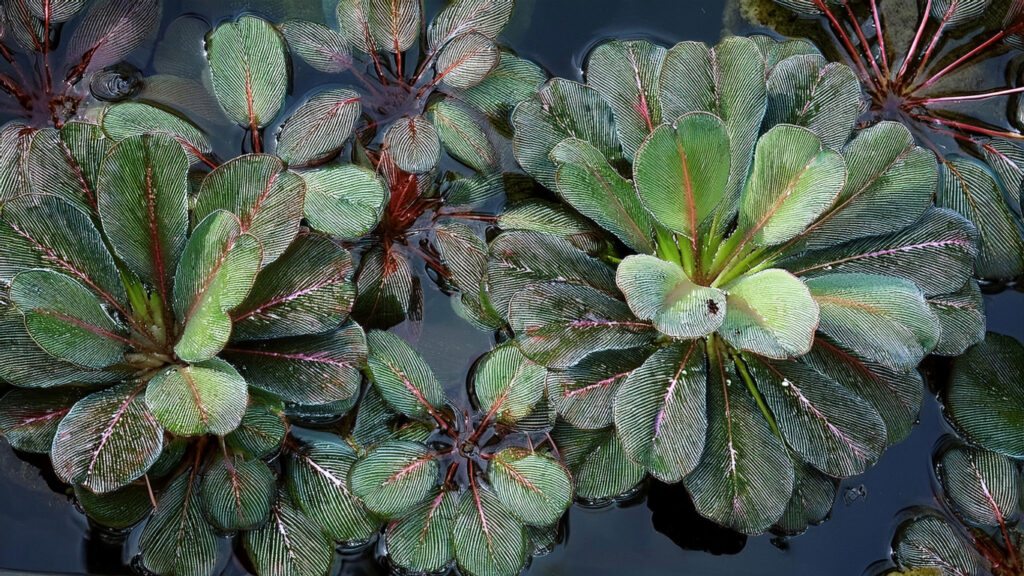
Tips For Successful Propagation
- Choose a healthy and actively growing parent plant for the best chances of successful propagation.
- Use sharp and clean cutting tools to prevent damage and infection.
- Ensure the water parameters and conditions in the separate container suit optimal growth.
- Provide adequate lighting and nutrient levels to support healthy root development.
- Monitor the water conditions regularly to prevent any issues such as algae growth or nutrient imbalances.
- Be patient and give the stem cutting enough time to develop roots before transferring it to the main aquarium.
Benefits Of Ludwigia sedioides
- Enhanced Aesthetic Appeal: Ludwigia sedioides’ vibrant green leaves and striking red-to-orange flowers create a visually stunning display in your aquarium. These plants add a unique touch to any aquascape and serve as focal points, drawing attention and admiration from viewers.
- Natural Habitat Simulation: By including Ludwigia sedioides in your aquarium, you can create a natural habitat for aquatic organisms. These plants provide hiding places, shelter, and important natural elements that mimic the conditions found in the wild, promoting the well-being and natural behavior of fish and other aquatic animals.
- Oxygenation and Filtration: As living organisms, Ludwigia sedioides absorb carbon dioxide and release oxygen through photosynthesis. This not only helps to oxygenate the water but also contributes to maintaining a balanced ecosystem. The plants also act as natural filters, helping to remove toxins and impurities from the water, promoting healthy and clean conditions for aquatic life.
- Nutrient Uptake and Algae Control: Ludwigia sedioides is known for its fast growth rate, which makes it an excellent nutrient absorber. These plants utilize excess nutrients present in the aquarium water, preventing algae outbreaks and promoting water clarity. Ludwigia sedioides helps control algae growth by actively competing for nutrients, creating a more balanced and visually appealing aquarium environment.
- Biological Balance: Ludwigia sedioides contributes to maintaining a stable and healthy biological balance in your aquarium. The plants provide surface area for beneficial bacteria to grow and establish colonies, aiding in biological filtration. This helps break down waste and harmful substances, contributing to water quality and the overall well-being of aquatic inhabitants.

Conclusion
Incorporating Ludwigia Sedioides, also known as mosaic plants, into aquascaping designs can greatly enhance the visual appeal of your aquarium.
By understanding the growth patterns, light and nutrient requirements, and proper maintenance techniques of this vibrant aquatic plant, you can create stunning aquascapes that will captivate and delight any viewer.
Remember to regularly monitor water parameters to ensure optimal conditions for this plant.
Consider incorporating diverse plant species to create a more biodiverse and natural-looking underwater ecosystem.
Additionally, engaging in advanced techniques such as propogation can allow you to expand your aquascape and enjoy the benefits of a thriving aquatic environment.
Frequently Asked Question
How Do I Strategically Position Ludwigia Sedioides In My Aquascape?
Position Ludwigia Sedioides in the foreground or midground of the aquascape to create focal points and draw attention to it.
Placing it near contrasting plants or hardscape elements can enhance its vibrant colors and create a visually appealing arrangement.
How Do I Plant Ludwigia Sedioides?
Planting Ludwigia Sedioides requires careful preparation and attention to detail to ensure successful establishment and growth.
Follow the steps provided in the planting guide section for detailed instructions.
What Are The Benefits Of Ludwigia Sedioides In An Aquarium?
This plant offers several benefits to aquarium enthusiasts, including enhanced aesthetics, increased oxygen production, and improved water quality.
The benefits section details the advantages of incorporating Ludwigia Sedioides in your aquarium.
How Do I Maintain Ludwigia Sedioides In My Aquarium?
Proper aquarium maintenance is crucial for preserving the beauty and health of mosaic plants like Ludwigia Sedioides.
Follow the maintenance tips section for guidelines on water testing, cleaning techniques, and maintaining the overall balance of the aquarium ecosystem.
Are There Advanced Techniques For Caring For Ludwigia Sedioides?
Yes, advanced techniques are available for experienced aquarists looking to take their Ludwigia Sedioides care to the next level.
The advanced techniques section provides insights into these techniques.
- Unveiling The Wonders Of Riccia Fluitans In Aquascapes - August 7, 2024
- Vallisneria Gigantea Var. Guide To Care And Cultivation At Home - July 31, 2024
- Vesicularia Dubyana Care & Growth Guide Tips For Beginner Gardeners - July 30, 2024
